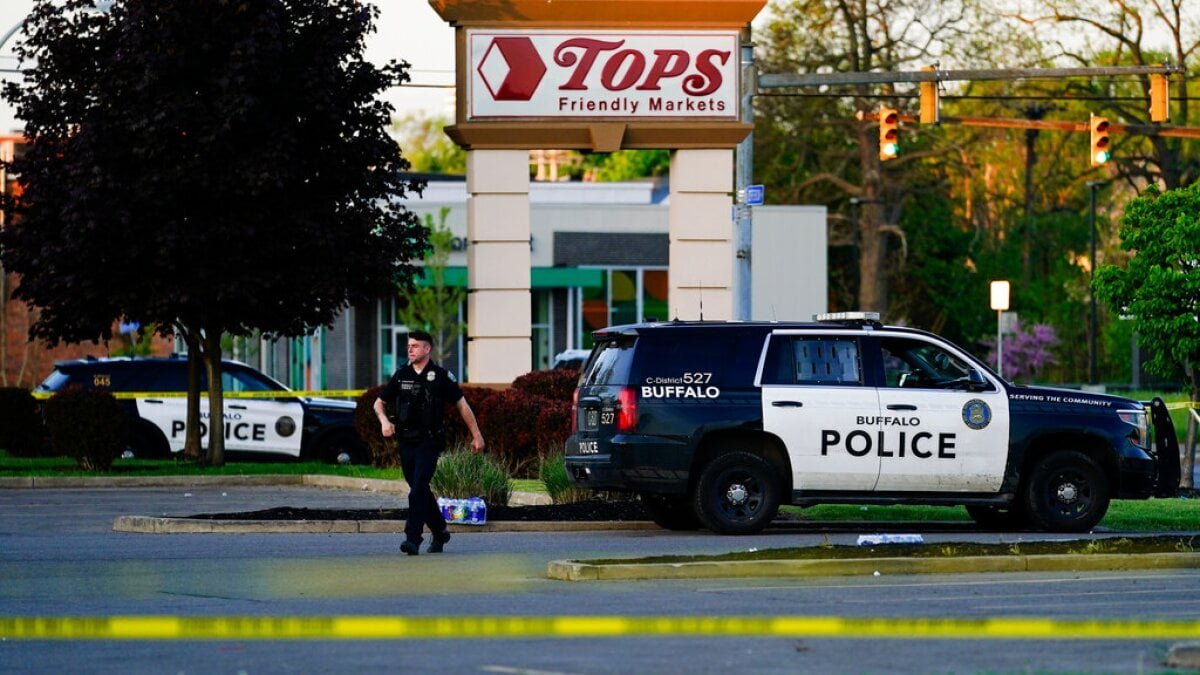There were different plans for this week, different ideas, and certainly an unrelated topic of discussion in mind. But of course, what happened in Buffalo last weekend cannot be ignored or pushed aside, just as similar failures of humanity could not and should not be.
We can certainly be more than a dozen people walking into a supermarket on that day with different plans and a separate map for the day. The police officers, the firefighters, and EMTs were not planning on the radical change to their shifts. Store workers certainly weren’t expecting the day to change their lives.
I’m not going to speak of the purported source of this calamity except to say he was in court this week, and the criminal justice system will progress and unfold as it does.
To keep our purposes on track for the moment, let’s look at the news, people, and no, I’m not talking about the coverage brought to us by the cable network shows. Think what you want, but I’m not very interested in what this person or that person sitting behind a desk has to say about the latest tragedy as they point fingers at what went wrong and search for the failures of this agency, that parent, or an administration past or present.
It’s not helpful, and there’s another time for all that.
I’m talking about the first responders of news people. The radio and TV are right there in Buffalo. The print and digital people work with the smallest of the weekend staff. They were planning to cover other things that day; a festival, a charity event, and maybe work on a feature report they were preparing for sweeps.
Who was thinking the nod from the assignment desk would change everything? Suddenly, the scene was going to become one of absolute frenzy and horror. The time before, the news trucks, reporters, and stringers were pushed back by police as the building was entered. Then just that quickly, the media briefing spot, if there is one established, is set further and further away.
There are countless instances, and events that create trauma and angst that can disassemble us from the inside out yet are part of our jobs. Among the most unimaginable to me is the act of pointing a camera at or holding a microphone towards those whose worlds in mere seconds were destroyed by the callous act of another.
And yet, doing so is not a reprehensible deed. It is what the position calls for, the story is to be told, and we must say to it correctly and honestly, often brutally. And believe it or not, more often than we find those most horrifically impacted by these horrible crimes that scream the loudest. Who wants their outrage known, their devastation felt.
Whether or not it becomes exploitation is up to the journalist there and then.
There’s an expectation from the viewer, the listener, and the reader that’s what the news is going to do; the reporter will get a reaction from those with the most right to react, those who lost so much.
And the reporter, the good reporter, will get just that.
It can come at a cost, though. Like many vocations, there’s a price to pay for it all, for having the ability to look into the eyes of someone crushed by tragedy and then elicit a response, to get them to open their souls when they are at their very worst. It’s difficult enough to witness such scenes, the carnage, and the aftermath and then talks with those at their most vulnerable.
However, good reporters can easily find themselves caught up in the tragedy and bewilderment that others are enduring. How can a person witness such sadness and horror and not be adversely affected? Is it even a possibility?
There are precedents too numerous to list, too obvious and familiar to need mention. Mass shootings alone fill books to make individual acts of terror, war and conflict, and natural disasters.
But what makes that journalist any less vulnerable?
With visual and audible reporting, a human response is readily apparent; with the written word, the author’s humanity comes across in how they interpret the events, but the result is the same. It is a skill and often a curse to not appear overly impacted by tragedy without appearing robotic.
But you cannot deal with people with it penetrating. Unfortunately, what has happened in Buffalo (and countless other cities) is still happening. All one needs to do is read between the lines of social media posts from news people covering these horrible stories.
I do not know how anyone could not go to such places, cover such stories and not grieve with those grieving, not be changed somehow. What is remarkable is how such people can come away from and still do their jobs.
So with that, a caution and a hope.
Trauma and the after-effects do not generally come via an instant diagnosis from a mental health professional.
Our esteemed members of the press out there owe it to themselves to stop and note what they’re putting those fine journalistic minds and hearts through when the complex stories come their way.
Bill Zito has devoted most of his work efforts to broadcast news since 1999. He made the career switch after serving a dozen years as a police officer on both coasts. Splitting the time between Radio and TV, he’s worked for ABC News and Fox News, News 12 New York , The Weather Channel and KIRO and KOMO in Seattle. He writes, edits and anchors for Audacy’s WTIC-AM in Hartford and lives in New England. You can find him on Twitter @BillZitoNEWS.







